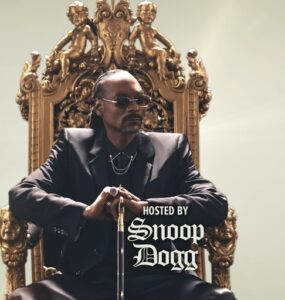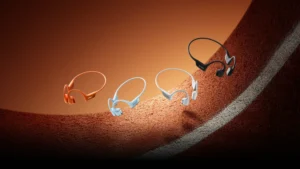In the lineage of visual storytelling, few techniques have persisted across centuries with such thematic depth and aesthetic influence as chiaroscuro—the dramatic interplay between shadow and light. Originating in the paintings of Renaissance masters like Caravaggio and Rembrandt, this visual principle has transcended the canvas to become a foundational tool in photography, cinema, and now, fashion editorial.
Dalong Yang’s latest photographic series, in collaboration with stylist Inky No, model Zhang Jiahui, and the creative team of Shitou (hair and makeup), Meng (photography assistant), and Shadow Studio (retouching), reimagines chiaroscuro not as a nostalgic callback, but as a visceral, modern narrative technique.
The result is a series that feels timeless yet urgent—unfolding emotion not in words, but in gradients of shadow.
Historical Foundations: From Oil to Lens
To understand the contemporary resonance of Yang’s series, one must revisit the origins of chiaroscuro. The term, derived from the Italian words chiaro (light) and oscuro (dark), emerged in 16th-century art theory to describe the tonal modeling used by painters to convey depth, drama, and divine presence. Caravaggio’s use of sharp contrasts—illuminating flesh against voids of darkness—set a precedent for psychological intensity in visual art.
Rembrandt further refined the technique, bathing subjects in soft directional light that seemed to expose not just skin, but soul. These methods influenced early photographic portraiture in the 19th century, particularly the daguerreotype era, and later found new expressions in film noir, with its obsidian shadows and narrow slivers of light.
Dalong Yang’s work is unmistakably steeped in this visual heritage—but he layers it with modern identity, fashion, and emotional interiority.
The Visual Language of Yang’s Chiaroscuro
The series avoids overt theatricality, favoring a stripped-down palette where texture and shadow do the speaking. Garments styled by Inky No are sculptural yet intimate—draped in velvet, silk, and textured linen, catching the light only at the edges, like whispers of form.
Model Zhang Jiahui inhabits this world as a figure between presence and absence—often looking away from the camera, her face partially submerged in darkness, inviting viewers not to consume her image but to meditate on it. This positioning evokes the stoic, contemplative poses of Renaissance sitters, yet with a 21st-century ambiguity.
Yang’s camera doesn’t simply document light—it sculpts with it. Each frame becomes a spatial dialogue, where darkness isn’t void but volume.
Hair, Makeup, and Shadow as Narrative Devices
The contributions of Shitou, responsible for both hair and makeup, are subtle yet essential. Makeup enhances natural shadows rather than erasing them. There’s a muted palette—charcoal, sienna, ink—applied to echo the tonal hierarchy of chiaroscuro painting. Hair is styled with irregular tension: a lock pulled back tight to expose a cheekbone, another left to fall into darkness. These decisions support the overall atmosphere rather than dominate it.
Shadow becomes a character in itself—not simply a background element but a foregrounded actor. The play of light across Zhang’s skin is like a moving brushstroke, revealing emotion in gradation.
Editing, Retouching, and the Ethical Aesthetic
Often in contemporary fashion photography, post-production becomes a battlefield between authenticity and idealization. Shadow Studio’s retouching avoids this trap. There is no aggressive smoothing or artificial lighting inserted. Instead, the retouching respects the physics of light—maintaining the rough grain of shadow, the slight sheen of sweat, the quiet irregularities that make skin feel lived-in.
This respect for realism is critical to the emotional power of the images. It allows for something rare in fashion editorials: silence. Not the absence of sound, but the presence of stillness.
Emotional Tonality and Gender
Zhang Jiahui’s performance within this visual space is both gender-fluid and emotionally ambiguous. Costuming, pose, and gaze shift fluidly between traditionally masculine and feminine codes, further unsettled by the chiaroscuro framework that resists clear definition.
In some frames, Zhang appears regal and composed; in others, vulnerable and blurred. The light refuses to settle. It flickers between past and present, between who she is and who she might be. This duality enhances the narrative complexity and invites multiple readings—not of identity fixed in one form, but identity suspended in flux.
Why Chiaroscuro Now?
The resurgence of chiaroscuro in contemporary image-making is no coincidence. In an era marked by overexposure—visually and culturally—there is an increasing appetite for opacity, mystery, and interiority. Social media rewards brightness, saturation, and accessibility. Yet counter-currents in art and fashion are moving the opposite direction—toward shadow, nuance, and psychological resonance.
Yang’s work speaks directly to this shift. His chiaroscuro series is not simply a stylistic homage—it is a refusal to flatten reality into digestible content. The images ask us to slow down, to peer into the dark, to understand that beauty is not always in what is seen, but in what is withheld.
Impression
Dalong Yang’s photographic series, crafted in meticulous collaboration with a discerning team, doesn’t just reference art history—it participates in it. Through a fashion editorial, he reopens a centuries-old conversation about light, form, and the soul’s visibility.
In a moment where clarity is often confused with truth, and brightness mistaken for positivity, the return to chiaroscuro reminds us of another kind of power: the beauty of restraint, the drama of subtlety, and the intimacy of half-light.
It is in this shadowed space that something rare flickers—a gesture, a breath, a truth. Not loud, not obvious, but utterly unforgettable.
No comments yet.








